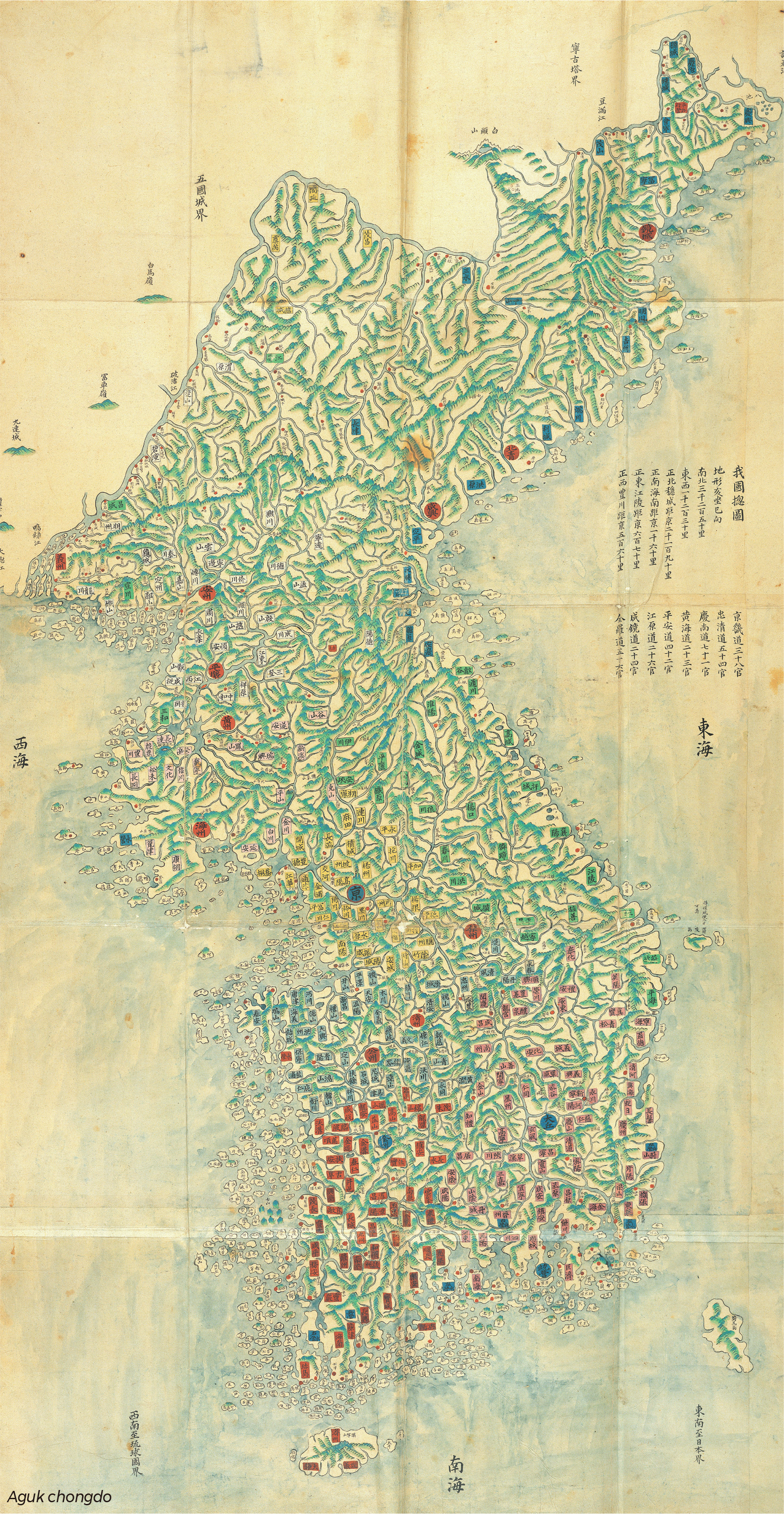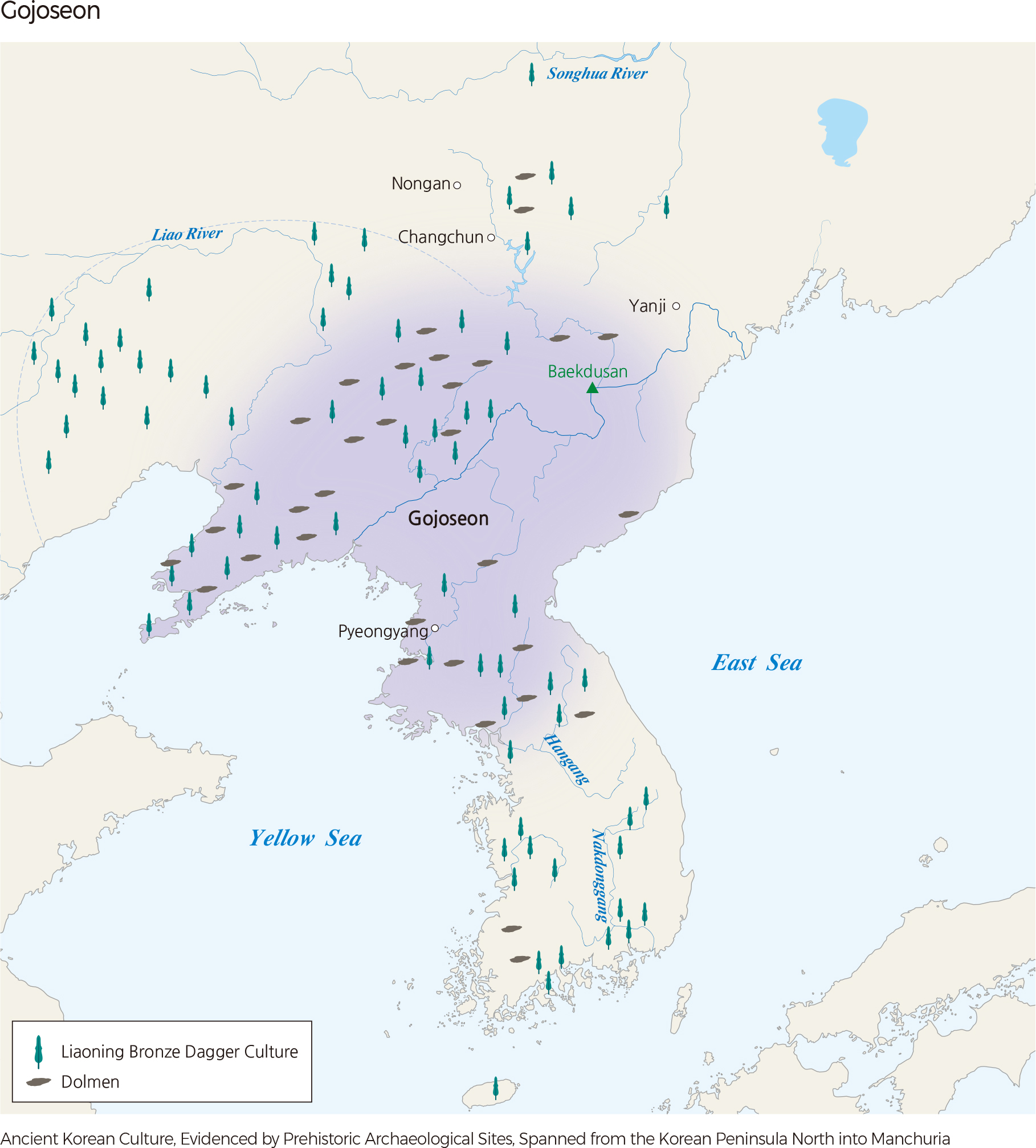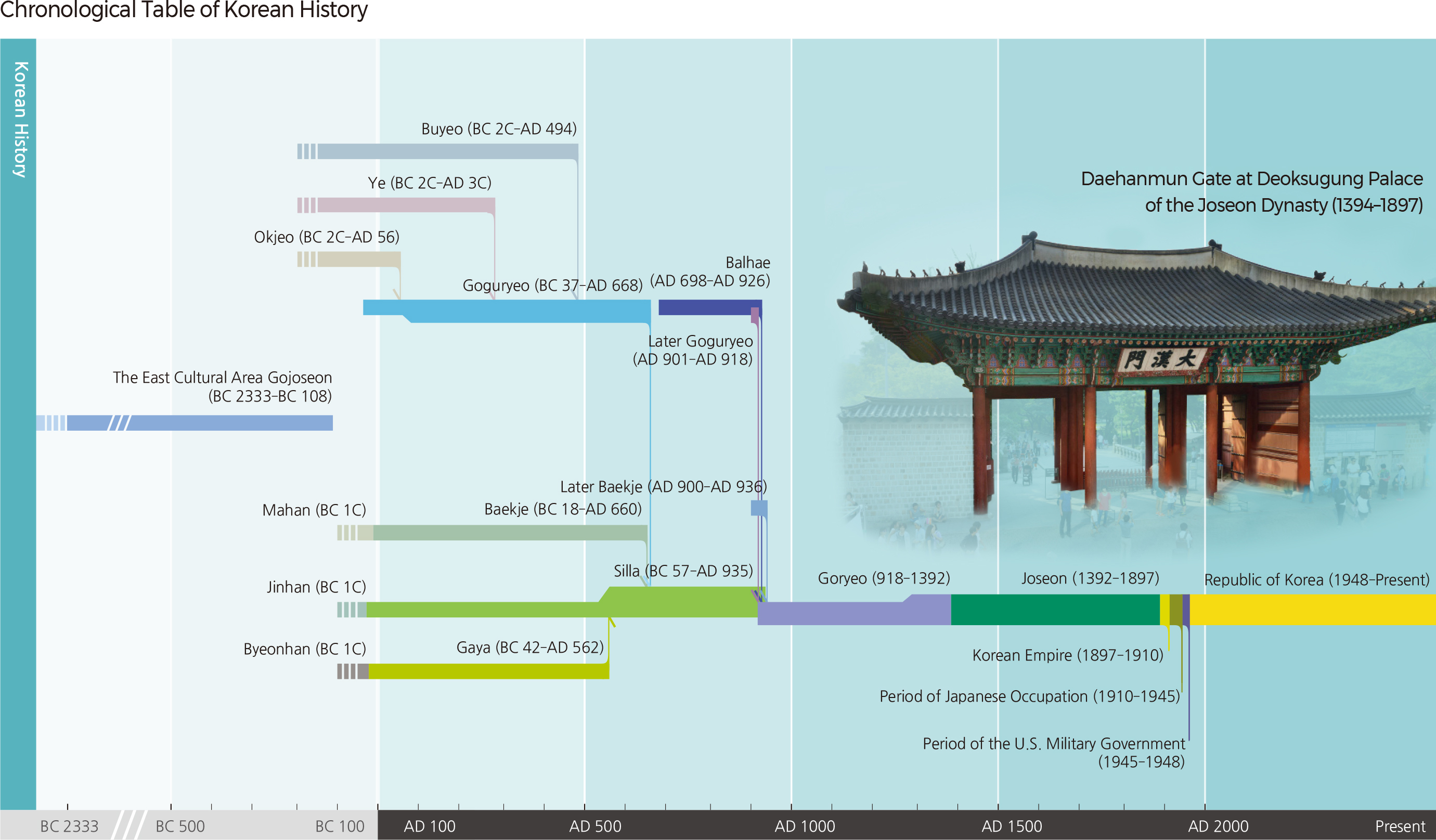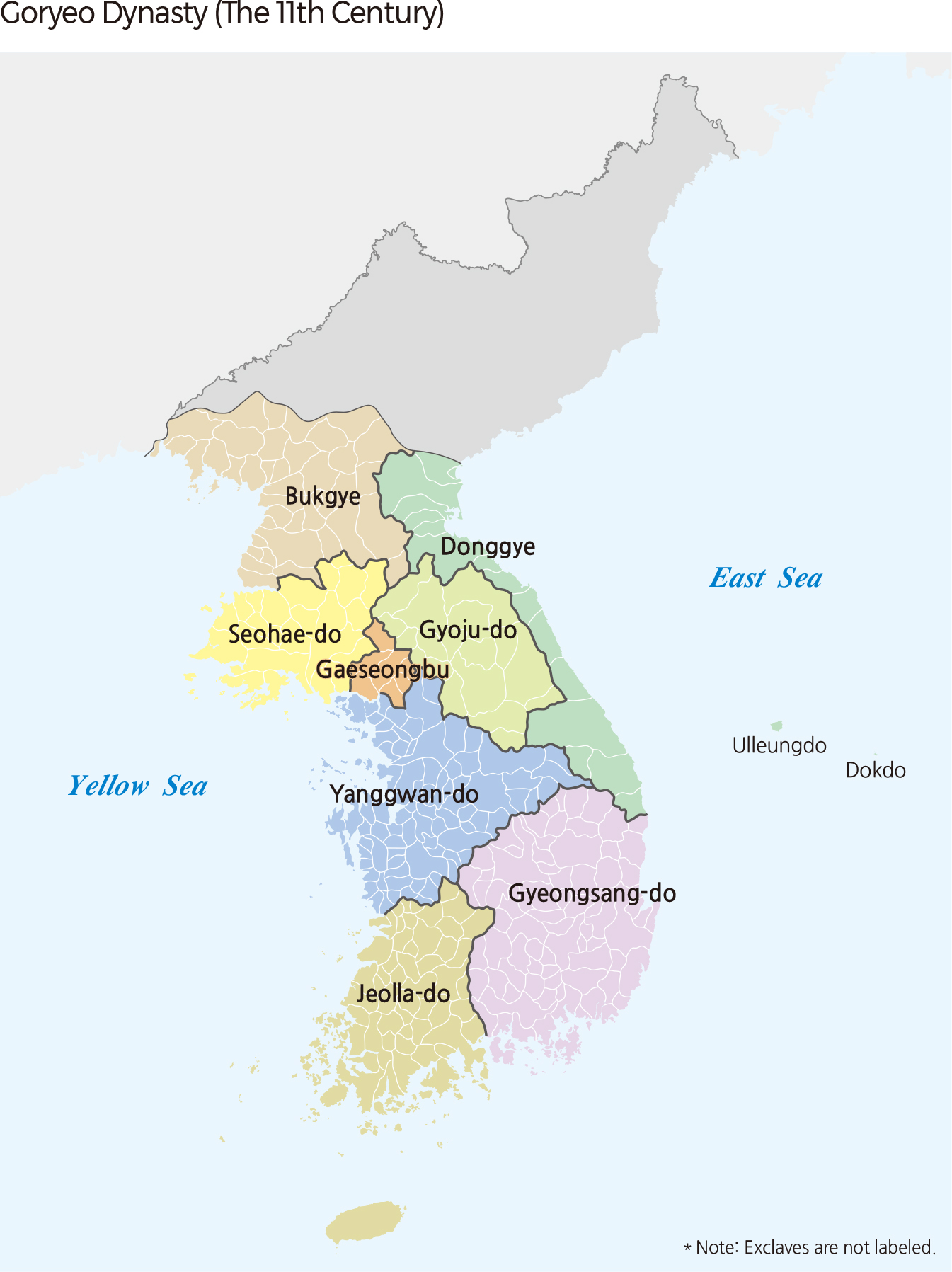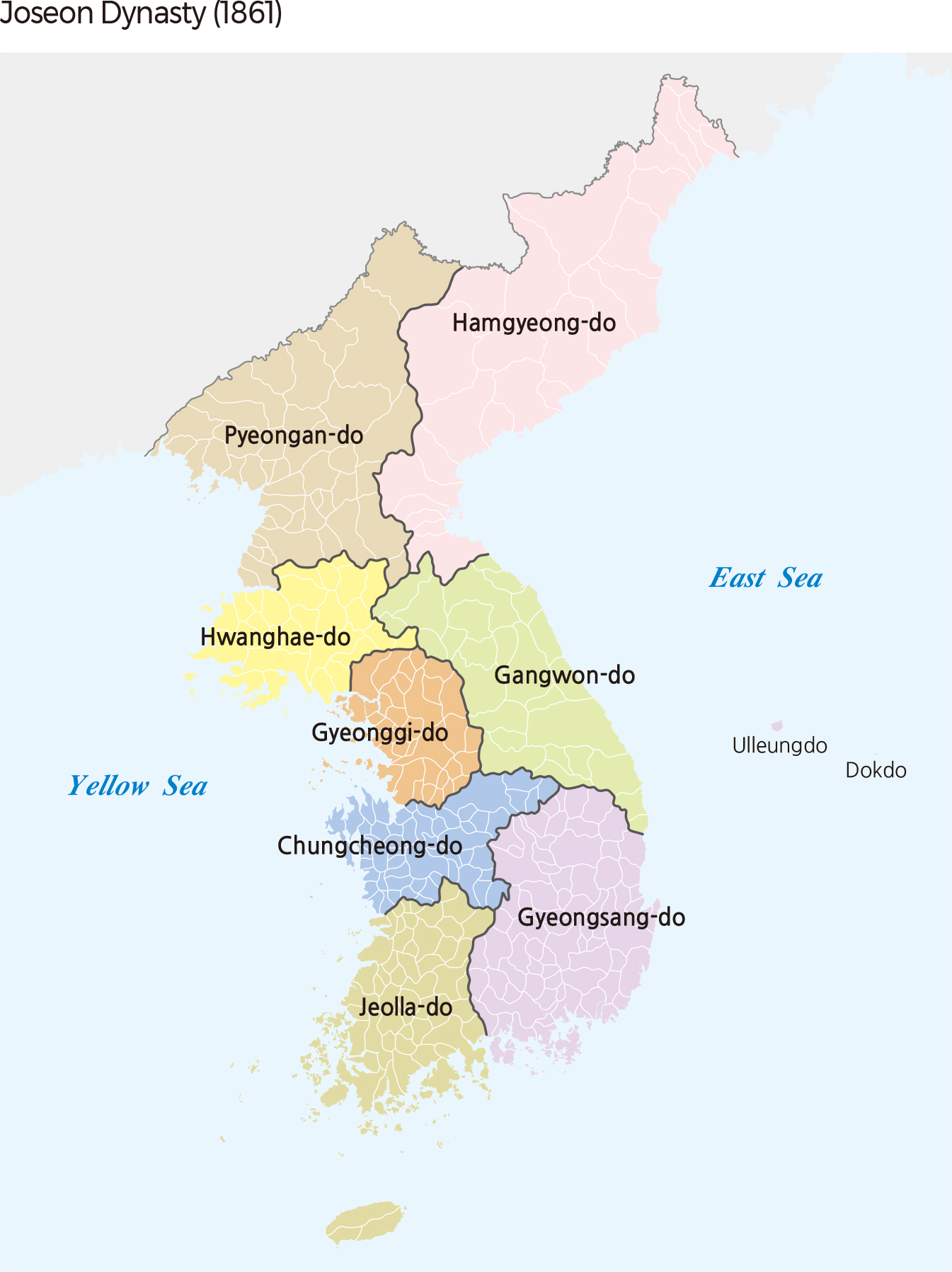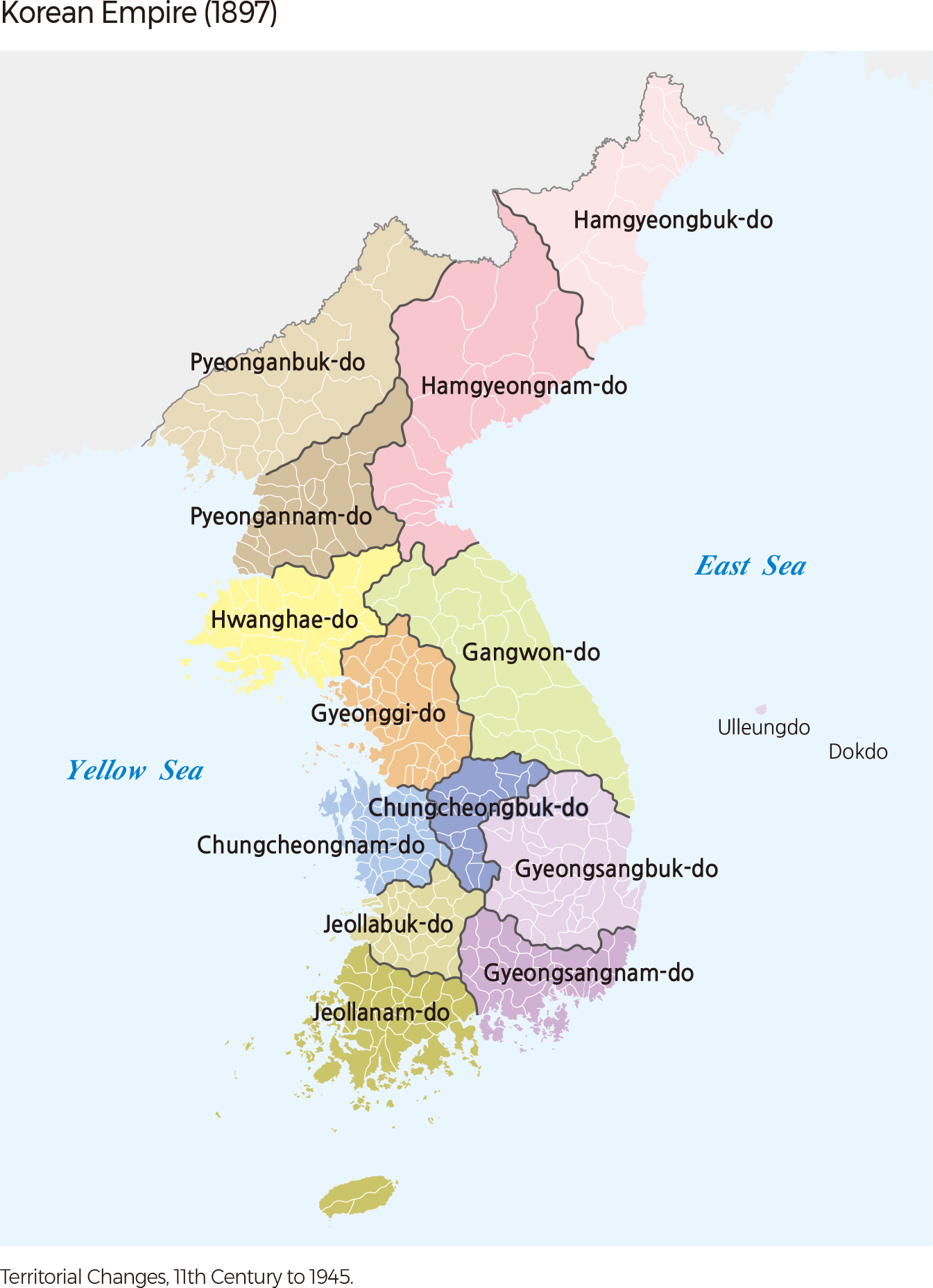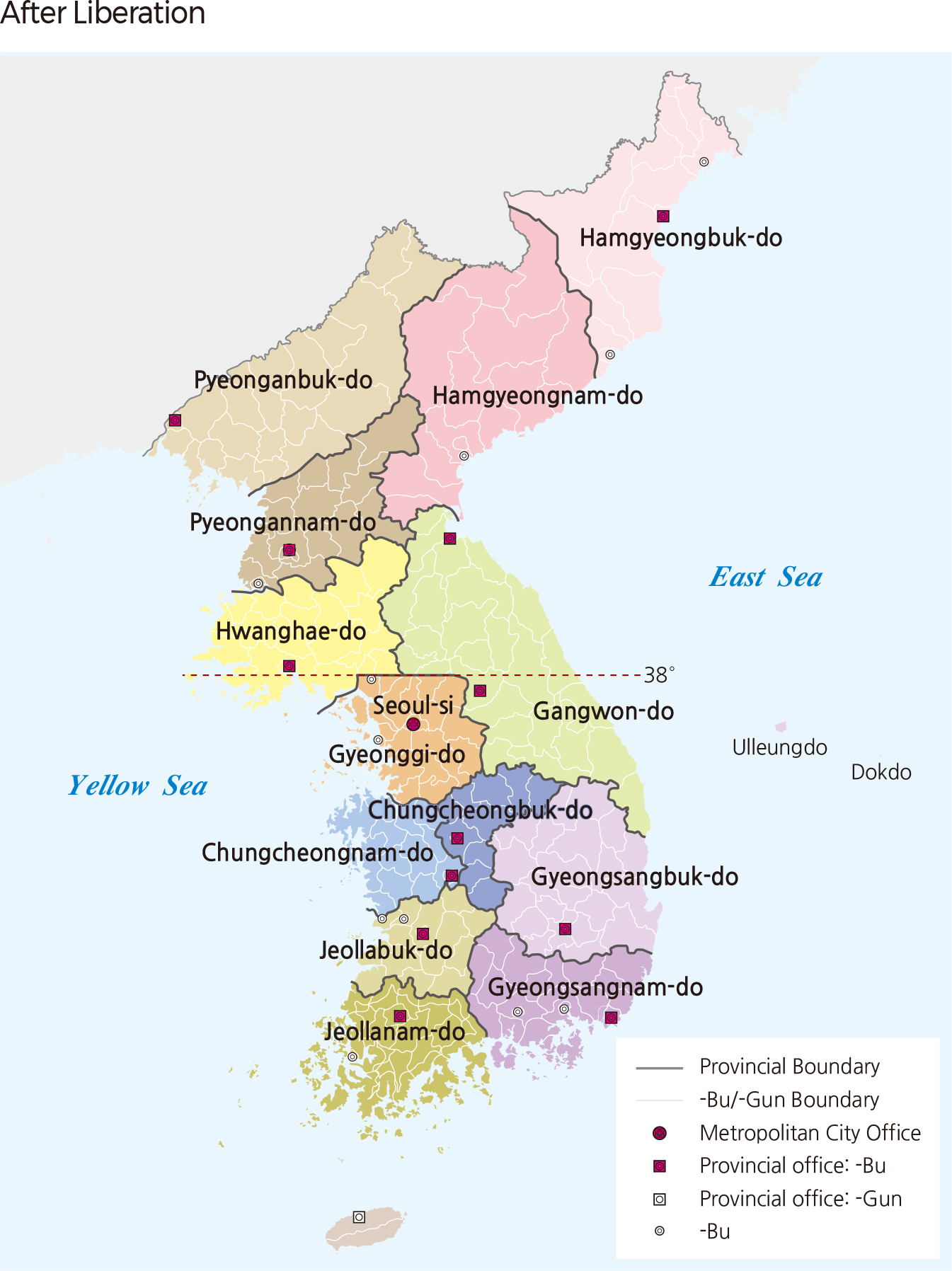Comprehensive Edition 2022
<map> Aguk chongdo: Resembling the style and design of the Dongkuk jido made by Jeong Sang-ki, the Aguk chongdo presents the beauty of Korean territory in an exquisite manner. This map is notable for its use of vivid colors: green for mountain ranges, blue for rivers, and five distinctive colors for different counties and prefectures. Provincial offices and barracks in eight provinces were circled and marked with respective place names to make them distinguishable. Islands off the coasts of Joseon were drawn in detail, implying the growing national interest in the coastal and insular regions.
Dokdo in the East Sea is identified to the east of Ulleungdo under the name Udo, and Tsushima is also portrayed on the map. The marginal spaces were filled with the frontier territory, the respective lengths of east to west and south to north distances to Seoul from the endpoints in all four directions, and the number of counties and prefectures in each province.
The ancient history of Korea developed across Manchuria and the Korean Peninsula. The first Korean nation, Gojoseon, was founded in the year 2333 B.C. and lasted until the year 108 B.C. The tribal countries were founded afterward: Buyeo, Dongye, Okjeo, and Samhan. During this period, known as the original Three Han States Period, the entirety of Manchuria and the Korean Peninsula were under the domain of one of the tribal countries. Buyeo held power mainly over Manchuria; Dongye and Okjeo were formed in the northern and central areas of the Korean Peninsula; and the Three Han States of Mahan, Jinhan, and Byeonhan thrived in the central and southern part of the Peninsula.
From the 1st century B.C. to the 1st century A.D., Goguryeo, Baekje, Silla, and Gaya were founded from succeeding and merging tribal nations. This period is referred to as the Three Kingdoms Period. During this period, as in other times, Korea’s territory stretched across Manchuria and the entire Korean Peninsula. Goguryeo occupied mainly Manchuria and the northern part of the Korean Peninsula, Silla thrived in the southern and eastern areas of the Peninsula, and Baekje dominated the southern and western regions. During the 7th century, Silla conquered both Goguryeo and Baekje, forming a unified nation in the inner region of the Peninsula that extended from the Daedonggang River to Wonsanman. In 698 A.D., Balhae was founded by Goguryeo refugees. This time period is referred to as the North-South States Period.
During the Goryeo Dynasty (918–1392) and the Joseon Dynasty (1392–1897), efforts to expand into the northern territories were made. By defending itself from the first invasion of Khitai in 933, Goryeo confirmed its occupation of six coastal provinces (Gangdong Yuk Ju). Goryeo started building the Great Wall (Cheolli Jangseong) in 1033 to defend its border with Khitai-Qidan.
The erection of the wall, which stretched from Sinuiju to Hamheung, established Goryeo’s northern border and continued its efforts to expand the northern territory until the late Goryeo Period. Such efforts lasted even into the Joseon Dynasty. In the 15th century, Joseon installed four forts in the Amnokgang Basin and six posts in the Dumangang Basin. These forts and posts established Korea's modern-day territory, which extends up to the Amnokgang and Dumangang Rivers. In the 18th century, the Joseon Dynasty built the Baekdusan National Boundary Monument, marking its border with China’s Qing Dynasty.
The modern and contemporary history of Korea following the Joseon Dynasty can be summarized through a series of events: the establishment of the Korean Empire (1897–1910), Japanese colonial rule (1910–1945), liberation from Japan (1945), U.S. and Soviet military governments in Korea (1945–1948), and the Korean War (1950–1953). In 1897, Emperor Gojong officially declared the establishment of the Korean Empire to respond to growing international imperialism. He then carried out internal reforms, only to witness the temporary loss of Korean sovereignty over its territory as it succumbed to colonial rule by Japan, whose power was strengthening over East Asia. This time period is referred to as Japanese colonial rule, which lasted until 1945. The independence movements for recovering the sovereignty of Korea never ceased, and the Korean people hailed liberation from colonial rule as Japan was defeated in the Second World War. |
